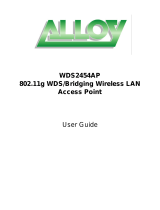
ii
6 WLAN RRM Configuration........................................................................................................................6-1
Overview.................................................................................................................................................6-1
Configuration Task list.............................................................................................................................6-1
Configuring Data Transmission Rates....................................................................................................6-2
Configuring 802.11a/802.11b/802.11g Rates .................................................................................6-2
Configuring 802.11n Rates..............................................................................................................6-2
Configuring Power Constraint.................................................................................................................6-3
Prerequisites....................................................................................................................................6-3
Configuring Power Constraint .........................................................................................................6-3
Configuring Only Non-802.11h Channels to Be Scanned ......................................................................6-4
Configuring Only Non-802.11h Channels to Be Scanned...............................................................6-4
Enabling 802.11g Protection...................................................................................................................6-4
Displaying and Maintaining WLAN RRM ................................................................................................6-4
7 WLAN IDS Configuration ..........................................................................................................................7-1
WLAN IDS Overview...............................................................................................................................7-1
Terminology.....................................................................................................................................7-1
WLAN IDS IPS ................................................................................................................................7-2
Configuring IDS Attack Detection ...........................................................................................................7-3
Configuring IDS Attack Detection....................................................................................................7-3
Displaying and Maintaining WLAN IDS...........................................................................................7-3
Frame Filtering........................................................................................................................................7-3
Overview..........................................................................................................................................7-3
Configuring WIDS-Frame Filtering..........................................................................................................7-4
Configuring Static White and Black Lists.........................................................................................7-5
Configuring Dynamic Blacklist Feature ...........................................................................................7-5
Displaying and Maintaining WLAN IDS Frame Filtering.........................................................................7-5
WLAN IDS Frame Filtering Configuration Example................................................................................7-5
8 WLAN QoS Configuration.........................................................................................................................8-1
WLAN QoS Overview..............................................................................................................................8-1
Terminology.....................................................................................................................................8-1
WMM Protocol Overview.................................................................................................................8-2
Protocols and Standards.................................................................................................................8-4
WMM Configuration ................................................................................................................................8-4
Configuration Prerequisites.............................................................................................................8-4
Configuring WMM............................................................................................................................8-4
Displaying and Maintaining WMM...........................................................................................................8-6
WMM Configuration Examples ...............................................................................................................8-6
WMM Basic Configuration...............................................................................................................8-6
CAC Service Configuration Example ..............................................................................................8-7
Troubleshooting ......................................................................................................................................8-8
EDCA Parameter Configuration Failure..........................................................................................8-8
SVP or CAC Configuration Failure..................................................................................................8-8
9 WDS Configuration....................................................................................................................................9-1
Introduction to WDS................................................................................................................................9-1
Advantages of WDS........................................................................................................................9-1






















